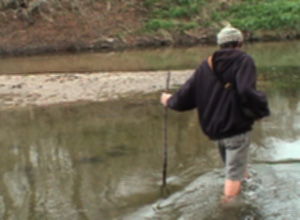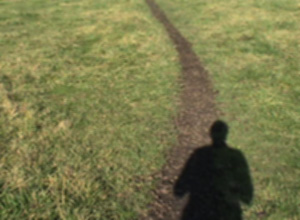

PAST
What its real origin was will never be known, but it is fair to believe, from its location and the points connected, that it was first a buffalo path, leading from river and grove in the east to the like objects in the west; afterwards an Indian trail, where the buffalo was hunted and trapped and finally adapted by the great tide of immigration which set in early in the last century from the States east of the Ohio to what is now known as the "Military Tract"....
When the white man first came here, he also found other trails which served to guide the traveler from timber to timber.... The location of these trodden paths over high ridges, connecting important timber groves, suggest a like origin to that attributed above to other early trails - namely, to the buffalo herd. Over them, doubtless in remote ages these wild roamers of the prairie, in great masses thronged from water-course to timber belt, in search of water and food, leaving no other souvenirs of their presence than their bleaching bones beside their worn paths, or near by the their watering and resting places. Man, either as a savage with his ponies, or as a civilized denizen of the country with his wagon, gladly accepted and long made use of these trails, until the improvement and fencing into farms of the country forced the roads upon section lines, since which, except in the memory of the aged, neither has now an existence. The scarred and furrowed surface of many a knoll upon these routes, however, where from the erosion of travel, the soil was long since worn away, bear silent testimony of the use to which they were put generations ago.
History of Champaign County (1905)
J.O. Cunningham
PRESENT
If Terry Lieb's dreams come true, part of his farm will be a type of living history museum, showing how the land looked before European settlement. A dominant feature of that landscape was the buffalo, and Terry already has the beginnings of a herd contentedly grazing on his Piatt County farm. He looks like a conventional farmer. His bread and butter comes from 2500 acres of corn and soybeans. He's on the Board of Directors for the Piatt County Farm Bureau and a member of the Conservation Board. But what about these large, hulking beasts grazing in the fields around the house? "People drive by here all the time, just to look at them," he says with a smile. "Believe it or not, I like it."
There was a neighbor in Monticello who had two buffalo. Growing up, Terry was always fascinated by them. To him, they were a living symbol of the historic old West in which Terry had a strong interest. Then two years ago, he went to a farm sale. Terry laughs. "I didn't know it was going to be there and I had no intension of buying it." That was the start of Terry Lieb's buffalo herd.... He plans to build a cow-calf herd over the next few years and develop the entire 80 acres of owned ground into native prairie for the buffalo herd. His purpose is to show others how the land used to look, while producing a healthy meat to market directly to consumers from off the farm.
The American Buffalo is a fascinating creature with a direct connection to our land and history. They are ideally suited for the region because they were such a vital part of the native ecosystem. Terry Lieb's idea for restoring that ecosystem while still using it for production is innovative farming that benefits everyone - the farmer, the land and the culture.
UIUC Extension